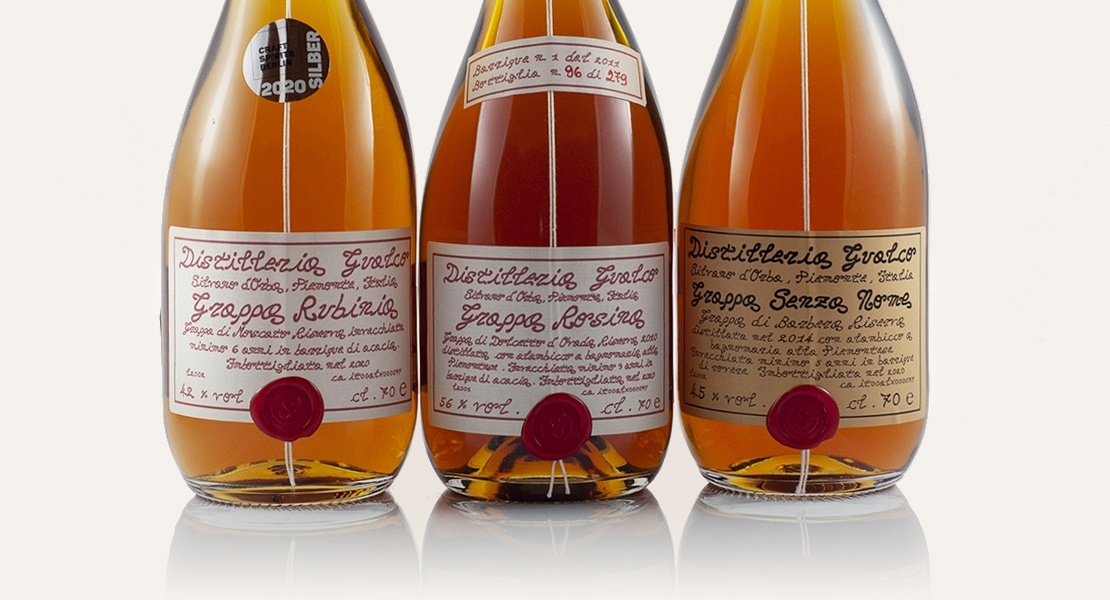

Every year, 3 or 4 months after the end of the distillation campaign, when all the grappas produced have been analyzed by the Chemical Laboratory of the Customs in Turin, we can start all the production phases following distillation.
Since the aroma and taste of the various batches of freshly distilled grappa have now stabilized, this is the ideal time to taste the products and choose which ones are the best for aging.
Through a careful tasting and an examination of the results of the chemical analyzes, Giorgio evaluates the organoleptic profiles and chooses the most suitable grappas for aging.
Generally the most fruity batches of grappa in which the primary aromas deriving from grapes and pomace are clearly distinguishable become young grappas, while the grappas that are characterized by a richer and more complex aromatic profile will be choosen for aging in wooden barrels.
According to the law grappa aging can only take place in wooden barrels and the words "Stravecchia or Riserva" can only be attributed to grappa aged over 18 months.
For the choice of barrels (tonneaux and barriques) the distillery relies on important Italian companies such as Gamba and Garbellotto but sometimes it also selects used barriques from local wine producers.
Over time the new barrels give a beautiful amber color and intense aromas of cocoa, tobacco, vanilla, spices and flowers while the older barrels give a straw-yellow color and a great aromatic complexity and finesse to the products.
The favorite woods of Distilleria Gualco are French oak and acacia and the level of toasting of the barrels that we like more is the medium level.
The barrels continue to be used for many years and many passages.
When we put the grappa in the ageing cellar every barrel gets sealed by the Government since the quantity of grappa that is introduced will suffer drops in aging over the years and when the seal is removed at the end of the aging period, these drops will be measured by the Government.
This allows us to certify the actual years of aging because the Government gives us a document for each barrel where it's written the year of introduction and the year of extraction and the drops of aging.
The continuous exchange of air between the inside and the outside of the barrel and the micro-oxidation that it produces through the pores of the staves cause the transformation of taste and perfume of grappa but also causes these drops. In Scotland this decrement is very poetically called "the angel share".
Our Grappa Riserva are Grappa Stravecchia, Grappa Vecchio Piemonte, Grappa di Barolo, Grappa Senza Nome, Grappa Rubinia and Grappa Rosina and each differs from the other in type of barrel, years of aging and grape variety.
